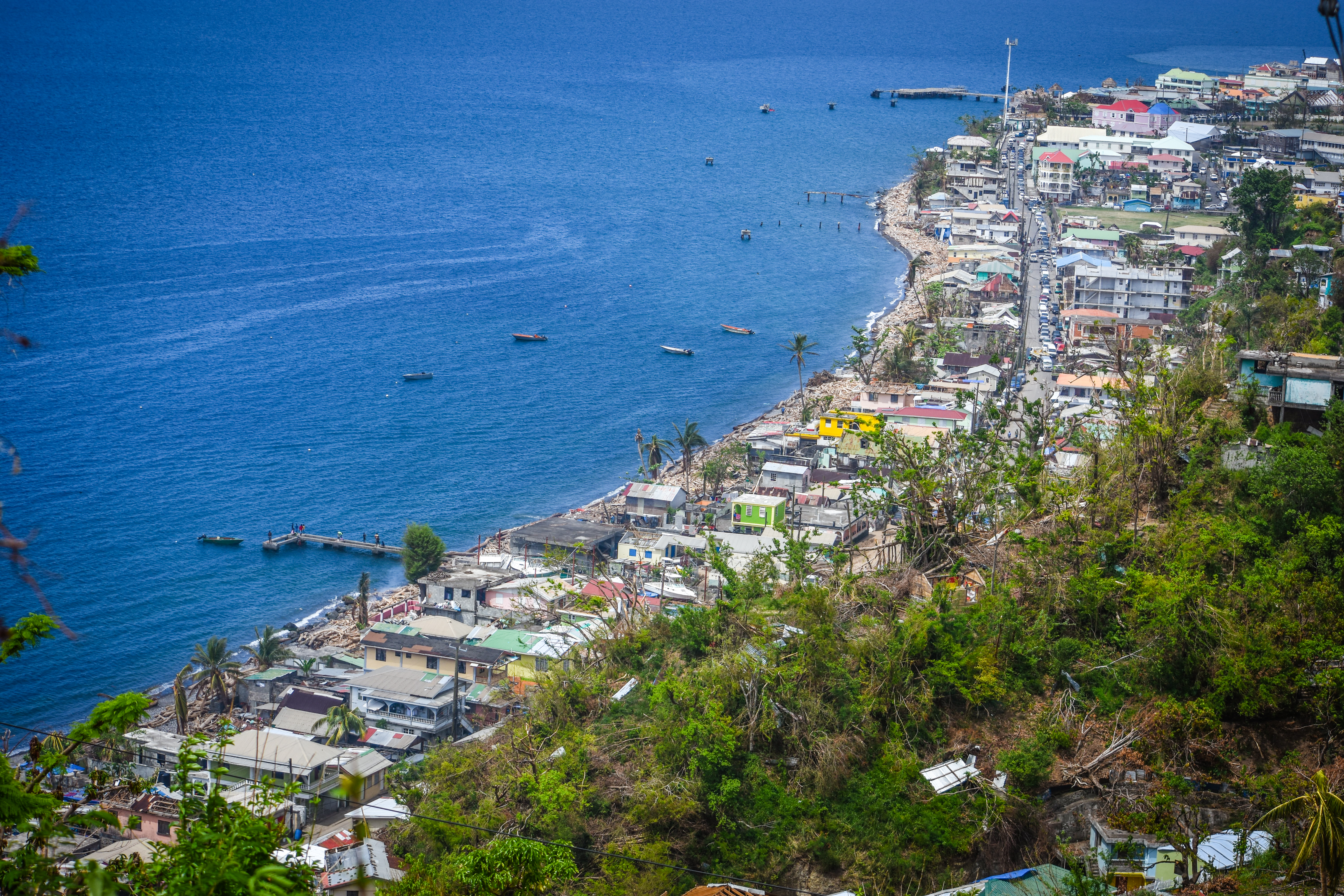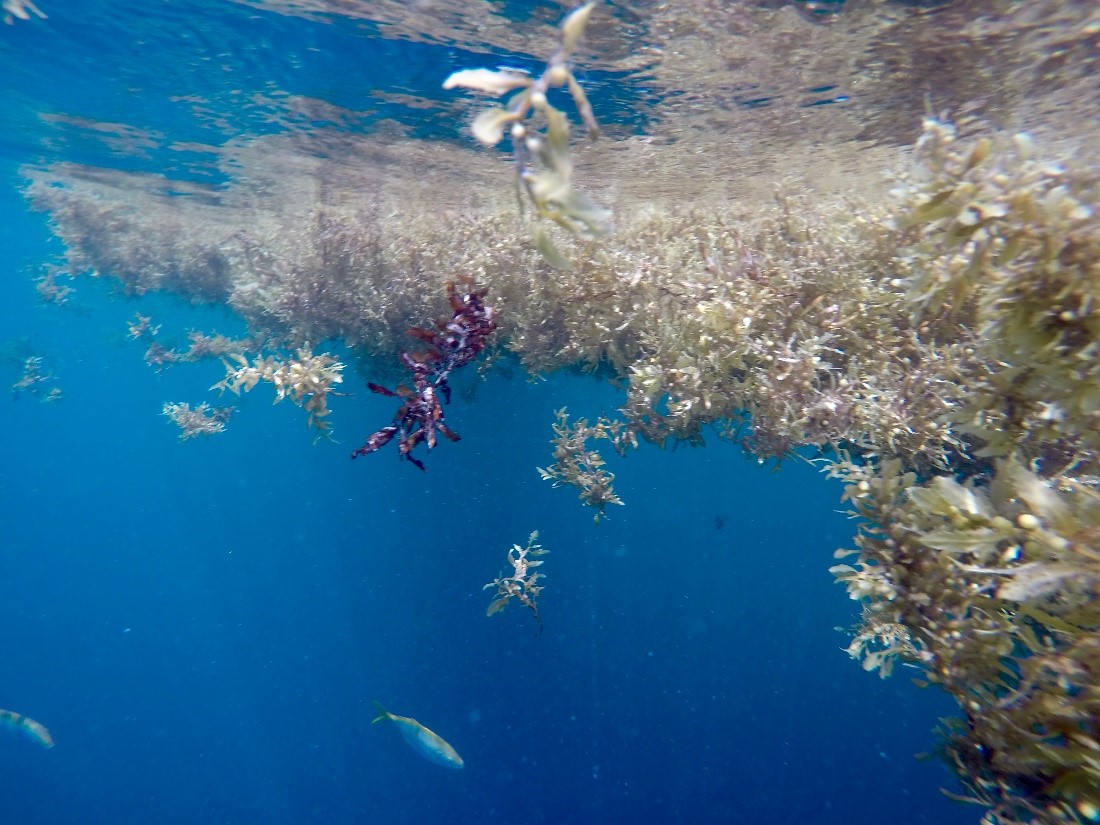Turning a harsh lived reality for Eastern Caribbean SIDS into hope through community solutions
Beyond climate doom and gloom....
February 13, 2023

Image source: UNDP Barbados. Devastating damage in Dominica following Hurricanes Maria and Irma, 2017
As of late, multiple interlinked global crises and emergencies have been unfolding at an unprecedented scale simultaneously. 2022 seemed to be the year where this polycrisis was extremely evident with climate being at the fore. Whether you refer to the current climate situation as a crisis, catastrophe or emergency, it is becoming clear that this phenomenon is currently one of the greatest challenges facing our world. And this challenge is expanding. Not only are we experiencing negative environmental impacts, but the crisis also impacts economic and social wellbeing, creating challenges related to health and safety, food production, security and wellness. The reality is that we cannot ignore nor escape it. It has touched all of us as it spans the blue and green planet. From rising temperatures, wildfires, floods and droughts to sea level rise, coral reef decline, habitat destruction and loss of biodiversity, the impacts are visible to everyone, affecting each continent and being felt by many. However, the effects being experienced are different around the globe, with significant nuances to consider.
We may share the same ocean, but we are not all in the same boat.
Women, youth, people of colour, and indigenous persons are disproportionately impacted by changes in the climate. This crisis is a harsh and lived reality in Eastern Caribbean Small Island Developing States (SIDS) where we are on the frontlines of the crisis, bearing the brunt of actions of others while fighting for climate justice. When two category five hurricanes (Irma and Maria) inflicted catastrophic social, economic and environmental loss and damage across the Caribbean region in 2017, the climate crisis was fully on our doorsteps, effectively wiping out years of development gains. Under various climate projection scenarios, it is likely that such extreme events will become more common, while the effects of slow-onset events such as rising sea levels will become increasingly felt.

Photo: UN Barbados / BajanPro. Impact of ashfall from the 2021 La Soufriere volcanic eruption in Saint Vincent and the Grenadines, including presence of sargassum seaweed.
The rough seas will continue
According to new data from World Meteorological Organization, the UN’s authoritative voice on weather, climate and water, rising global temperatures and other alarming climate change trends are expected to persist with the long-term warming trend set to continue. Over the past eight years, the period from 2015 until now has been the warmest on record. Relatedly, the World Economic Forum’s 2023 Global Risks Perception Survey and Report finds that climate change remains the biggest risk facing the world over the next decade, with the top three global risks during this period being climate risks: 1. failure to mitigate climate change 2. failure of climate change adaptation 3. natural disasters and extreme weather events.
There is no quick fix for this crisis, and the linked overexploitation of natural resources, and destruction of biodiversity on land and in the ocean is creating what some are calling “the world’s 6th mass extinction” event. We are living in the age of the Anthropocene, where unlike previous extinction events caused by natural phenomena, this extinction is being driven by human activity. In this age, and under this context, complexity and uncertainty are defining features and there is an urgent need to find a better balance – for people, for planet. This painting of doom and gloom is the harsh reality but there is a glimmer of hope.
Collaboration and partnerships can help us weather the storms
In the midst of a disruptive and turbulent period in human history, UNDP Barbados and Eastern Caribbean has been working with governments, partners and stakeholders to respond to climate change – through both adaptation and mitigation initiatives. Some of these initiatives include Climate Promise (building resilient futures in the Caribbean), EnGenDER with two of its Sub-Projects: Working Towards a Climate Resilient Dominica and Climate Smart Fisheries in Saint Vincent and the Grenadines as well as the Project for Improving National Sargassum Management Capacities in the Caribbean.
The climate crisis is a gender equality issue
Since 2020, the EnGenDER project, with support from the governments of Canada and the UK, has been implementing initiatives to integrate gender equality and human-rights based approaches to strengthen disaster risk management and build resilience for the effects of climate change within the fishery communities. In Dominica, support is being given to Titiwi (West Indian White Bait) fishers. In order to support fisherfolk to trade, fish and harvest more efficiently, EnGenDER is providing equipment such as scales, nets, knives and protective gear while also providing storage, ice machines, coolers and training opportunities so that fishers become better equipped when handling the Titiwi. They are also receiving training and support surrounding smoking, packaging and selling the Titiwi to optimize sales. In Saint Vincent and the Grenadines, over 400 Tri Tri (West Indian White Bait) fishers will benefit by receiving livelihood equipment such as freezers, raincoats, buckets, submersible lights, and ice boxes, among other items. This equipment directly supports them in the areas of harvesting and storage, allowing them to enhance their operations and businesses to generate more income and be prepared for when more climate change impacts come their way. In 2023, these two fishing communities will be able to learn from each other as they will take part in a Knowledge and Experience Exchange in Dominica. This will further optimize the economic contributions made by the fishery communities and will assist with the continued effort to make the fishery community climate change resilient. The Accelerator Lab is looking forward to working more closely on these projects and sharing some of our experiences in supporting fishers to become more resilient to external shocks in the Eastern Caribbean.
Building Government capacities can help the region ‘keep our heads above water’
On the sargassum seaweed front, massive and episodic influxes of floating sargassum seaweed have inundated Caribbean shorelines since 2011 and are becoming a recurring external shock to SIDS. According to the 2021 UNEP Sargassum White Paper, Caribbean territories can receive as much as 100 metric tonnes of sargassum per kilometre of beach per day during an inundation event, resulting in economic losses and social and health issues for many coastal communities. In addition, coastal ecosystems have been negatively impacted by both the fresh and decaying seaweed compounded by the difficulty to predict the timing and quantities of inundations. The challenge of sargassum inundations is both an ocean based and coastal hazard that is tentatively linked to climate and associated crises. Thus, this phenomenon, when paired with the adverse effects of climate change – such as sea level rise, ocean acidification, and other coastal hazards, increases the pressure on vulnerable coastal zones. To address this challenge, UNDP’s Sargassum Management project is supporting the enhancement of the national capacity for the management of sargassum inundations by providing Barbados, St. Kitts & Nevis, Saint Lucia, St. Vincent and the Grenadines and Trinidad & Tobago with equipment, expertise, and technical knowledge to collect, remove, transport, and dispose of sargassum accumulated on shore and/or in the nearshore. As the Lab further collaborates on this project, it hopes to contribute to the uncovering of insights from conversations on the sargassum value chain and commercial feasibility, particularly as it relates to downstream opportunities for the creation of new blue bioproducts, services and livelihoods.

Image source: UNDP Barbados/ Nikola Simpson
We will continue to explore the Blue to find viable solutions
These are just a few examples of how SIDS are actively on the frontlines of the polycrisis and are fighting back. While the overall outlook is grim, there is still hope. We are working with communities to boost their resilience while enhancing the capacities of governments to manage the impacts of the changing climate.
The Accelerator Lab continues to explore climate and ocean insights and trends in collaboration with initiatives like EnGenDER and the Sargassum Management Project to further scale up resilience building efforts. Through the use of Research & Development (R & D), the Labs are anticipating futures while piloting prototypes that may lead to value creation. With the overwhelming reality of the “doom and gloom” of the climate crisis, it is hard not to ponder whether emerging or emerged trends point to real change, informed by communities that will stick around and lead to action. Will these solutions affect change for those closest to the problems at hand, especially for communities experiencing them daily while amplifying their voices? On our quest to generate insights, new value propositions and empower open innovation ecosystems, we have been listening, observing and collaborating on how we can shift our relationship with the environment and by extension, humanity as we look to big or large ocean states for hope. Nature is speaking to us. Are we listening?
Stay tuned for other features of this blog series where we will share more positive ocean and climate stories of communities turning the doom and gloom of the climate crisis into hope, the linkages between the climate crisis, climate anxiety and mental well – being as well as the role of traditional and indigenous knowledge and skills within the ocean – climate nexus.
Written by Nikola Simpson and Jordanna Tennebaum, Accelerator Lab in Barbados and the Eastern Caribbean with inputs from Shara Spencer, Joycelyn Alleyne, Marium Alleyne, Mohammad Nagdee and Karima Degia.

 Locations
Locations